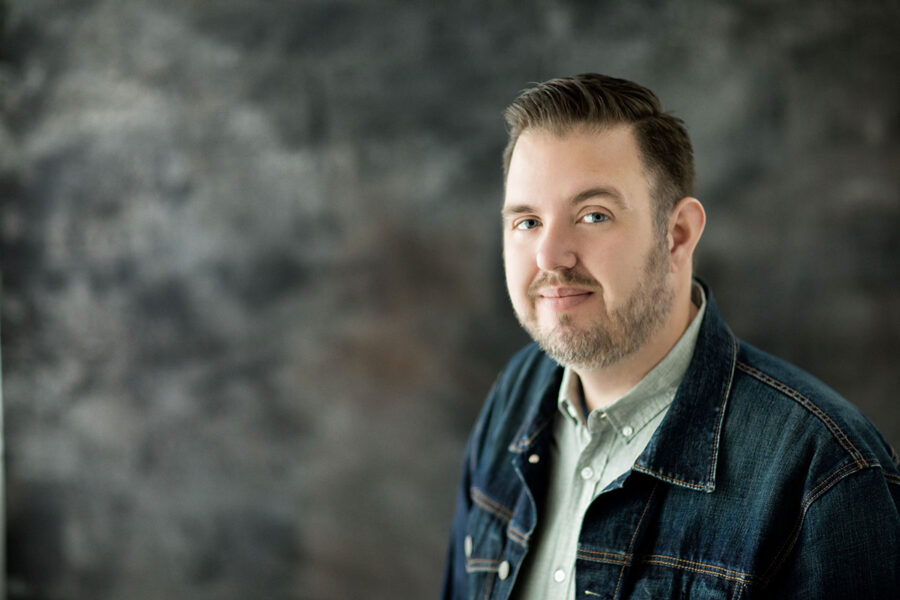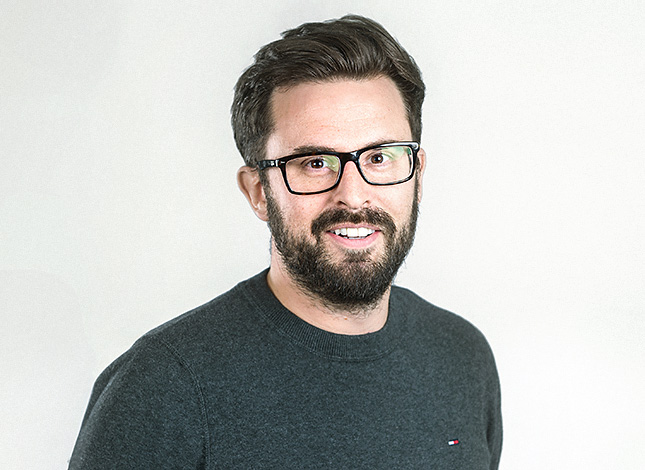Dean Flynn works as a Program Director at IE, a digital agency in Melbourne, Australia. As well as being addicted to his iPhone, he can also be found regularly tweeting. Follow Dean on Twitter »
The Day Job
Tell me a little bit about the company you work for
I work as Program Director for IE, a leading digital agency in Melbourne. We are a strategically led agency that ensures our clients get the most out of their digital spend.
We do this by having measurable objectives linked to each project, followed by performance intelligence that evaluates success and allows us to tweak client’s digital assets.
We utilise the many facets of digital to provide exposure and conversion for our clients and offer account planning, solution architecture, production and managed services. Our clients include Movember, Converse Australia, Hoyts, Snickers, Lonely Planet, Mitre 10, Department of Sustainability and Environment, and Melbourne Convention and Visitors Bureau.
What is the ratio of digital project managers to production staff at your company?
We have 35 staff at IE, with 5 Producers and 20 production staff across strategy and solutions architecture, design, development and testing – so 1 to 4.
Do you use any particular project management methodologies? If so, why? If not, why?
We use iterative development based on the OpenUP methodology for projects that are longer than 6 weeks, as less than 6 weeks is basically just one iteration. We have moved to iterations after finding that waterfall methodologies frustrate both our clients and ourselves.
Documenting everything at the beginning of a job, as is required with Waterfall methodologies, is both unrealistic and limiting in a landscape that changes so frequently. We’ve also found that better or more efficient ways of completing a project are often uncovered during production, and Waterfall makes it difficult to sway from the original plan. Our methodology means we incorporate this learning and have these discussions with our clients at the end of each iteration, enabling us to jointly agree on the best approach and use this for the remaining iterations.
Using iterations also means we can provide our clients with frequent releases of working software, which can be integrated into the overall solution. This is particularly important when enhancing an existing site. Rather than having to wait months to see progress, our clients see it within weeks.
Another major benefit is being able to continually prioritise work in conjunction with our clients. If new feature requests come up, we can rate these against the current list of requested features and prioritise the most important.
What online or offline tools do you tend to use for digital project management?
We have a custom developed agency management system that controls our projects and resources. Microsoft Project is used for scheduling, Omnigraffle and Visio for wireframing, as well as Axure.
How on earth did you end up managing digital projects? Few people start out with this aim. Tell me how you wound up being a full-time punch bag?
Well I started out with grandiose expectations to be a world renowned web designer, however when comparing my output with my peers I quickly decided that I wasn’t likely to be as prolific as I may have wanted. So I moved into front-end coding, but found that my desire to keep up with the constantly shifting sands of technology was waning.
I did discover, however, that I had a knack for talking to clients and translating this into requirements, which my more technically inclined team-mates could develop, and as such I became a team lead and this led to digital project management.
Do you just manage digital projects or is your role varied? If so, what other roles do you perform?
As Program Director I have a team of Producers who work for me to manage our projects. My role is to ensure that our process is being followed and improved where required, and that the internal and external projects we have are running on time and budget and, of course, meet our quality expectations.
I work with the other Directors at IE to manage the agency and work with them to ensure we are shaping it to offer a point of difference from our competitors. And finally, but not least, to help provide a fun and energetic workplace for our employees.
What type of digital projects do you typically work on?
We have a range of clients across Government, FMCG, retail and the entertainment sectors. Our projects range from strategic planning, production of simple to complex web sites and applications, 3D and video production and social media implementation and advice.
Usually, we provide a bespoke bundle of these services that work together to provide an overall solution.
How many digital projects are you currently managing? What’s the most you’ve ever managed at any one time?
Currently we have major projects running for 12 clients, some of them with multiple projects running concurrently. The most I have personally run concurrently would be 8 of various complexities and budgets.
What percentage of a digital project’s total budgeted hours would you typically spend on project management?
As a rule we budget 20% but this can vary depending on the requirements of the project and the client’s needs.
What digital projects are you working on right now, and what digital project are you most proud of to date?
We are currently working on the Movember application for their 2010 campaign, a number of projects for Hoyts, a social media campaign and site around water sustainability for a Government agency, the Authentics Australia site, work for Mitre 10, a promotional tool for a major loyalty program and strategy and web application development for the Melbourne Convention and Visitor Bureau.
Recent projects I am most proud of would be Hoyts, Converse Australia and a couple of others that are in the works and waiting for release.
Describe a typical day in the life of your role managing digital projects.
Have breakfast, check emails, arrive at work, coffee, attend to any urgent issues, plan day, liaise with Producers on their projects to provide advice and monitor progress, coffee, one-on-one meeting with one of the Producers to review their projects and progress and provide feedback or advice on them.
Meet with the Managing Director to discuss broader issues and individual projects/client issues he needs to be across. Talk to clients about their program of work and discuss any relevant outcomes with the assigned producer.
Monitor resourcing, pipeline and invoicing. Work on any new business/pitches. Work on our processes to continually enhance and better document what it is we need to do in order to succeed.
How would you describe your managerial style?
I believe in self-leadership, whereby you provide guidance but do not direct. I don’t want to be the go-to guy; I’m building a team of people who are confident in their own abilities and make their own decisions. I’d much rather someone makes a mistake and learns from it than never make the mistake at all.
What are the common things that crop up on a daily basis that destroy your planned activities for that day?
New business opportunities, support issues and project related issues that have been escalated.
How do you keep organised personally, given the hectic life that comes with managing digital projects?
I set regular meetings for catch-ups with my staff, so there is a dedicated time which means less frequent interruptions. I use Things for my to-do list and Evernote for note-taking on both my Macbook and iPhone to keep myself organised and synchronised wherever I am.
The Projects
At what point do you typically get involved with a digital project you are to manage? Pre-sales and estimating or only post-sale?
Pre-sales
What technique do you use to estimate digital projects? Do you use different ones for small and large projects?
We have grouped tasks into work related packages and provide estimates based on these for all projects. We use this method regardless of the size of the project.
How do you handle unrealistic digital project budgets and schedules?
With due care. I generally discuss any concerns we may have with the client to gather what the business problem is which needs to be resolved, and to see if we can come up with a solution which will work. As we work in iterations we can often release the features in stages that could meet the deadline.
Sometimes, however, you simply have to be honest and say it can’t be done for that price or in that timeframe.
How does your company approach scheduling all the work currently in the pipeline?
We have a resource management tool that allows work to be scheduled.
You receive a new digital project to manage, what are the first steps you’ll take?
Write a reverse brief if one doesn’t already exist to ensure that there is clear understanding on what we are required to deliver, and have the client sign off on this.
Do you manage all aspects of digital projects, like design, front-end and back-end development, or do department leads manage production based on requirements you capture?
All projects have requirements captured. In regards to team management we use a bit of both, depending on the size of the project. Larger projects have a lead within each team whose job it is to monitor their team and work with the Producer, smaller projects have a much tighter team that works directly with each other.
What deliverables do you personally typically produce on a digital project? Sitemaps, wireframes, functional specifications? Or are these produced by someone else? If so, who?
The Producer is responsible for Statements of Work, Project Charter (contacts, risks, issues etc.), change requests etc. whereas our Solution Architects generally produce the sitemaps, wireframes and functional specifications. There are certain instances, primarily on smaller projects where a Producer may complete these deliverables.
What are all the things that will be defined and approved before design or development begins on one of your digital projects?
- Statement of Work – defines the project background, scope and deliverables
- Functional Specification – includes project background, scope, deliverables, sitemap, users, user flow charts, use cases and wireframes
- Technical Specification – includes system requirements, hosting requirements, integration, browser requirements and technical design
How do you tackle the art of monitoring digital project budgets versus progress?
Once again using our internal agency management tool, and a profit and loss sheet tracking external costs, time spent and time remaining.
How do you manage the inevitable scope creep on digital projects?
Agreeing on scope with the client at the outset of the project is the key. This is documented in the Functional Specification and signed off, meaning that any changes or new work are run through a change request process and signed off before any work begins on the new work.
Using iterations allows us to be pretty flexible with changing things as we go and being flexible to suit our client’s business priorities, however work that isn’t in scope is always put through as a change request to ensure it is documented and agreed upon by both IE and the client.
What advice would you give for managing difficult clients?
Maintain your professionalism, even if they don’t. Listen to them, understand what their concerns are and work with them to agree upon a solution. Often a client is only being difficult because they don’t understand something, and are stressed out about the situation. Working with them so they become an educated client usually works in your favour, particularly with long-term relationships.
How do you ensure past mistakes on digital projects never happen again?
We do formalised post-mortems on projects, evaluating the good and the bad from a project so that the company can learn from its mistakes. Wikis are also used to keep knowledge from our past projects accessible.
The Big Questions
What websites, blogs and podcasts are you currently using regularly for inspiration?
Twitter is a big one for me, I use it to try and find solutions and references to great blogs that others are using. Much more so than regularly reading certain blogs. I also reference Smashing Mag and Harvard Business Review regularly but this is often prompted by their tweets.
What are the biggest differences between managing website projects and web application projects?
Web applications require a much greater level of risk management due to their complexity and business-critical nature. As such they also require a greater level of quality assurance.
What do you think are the key personality attributes required to be a good digital project manager?
Patience, the ability to think laterally, trustworthiness, confidence, being well-organised and able to prioritise effectively.
What are the biggest common misconceptions about digital project management?
That all we ever do is agree with the client (from team members) and that we add no value and are simply administrators (from inexperienced clients).
What, in your opinion, is the hardest part of digital project management?
Keeping a team motivated on a long project where the challenges seem insurmountable.
In three words, how would you describe digital project management?
Exciting, manic, ever-changing.








Great interview Dean!